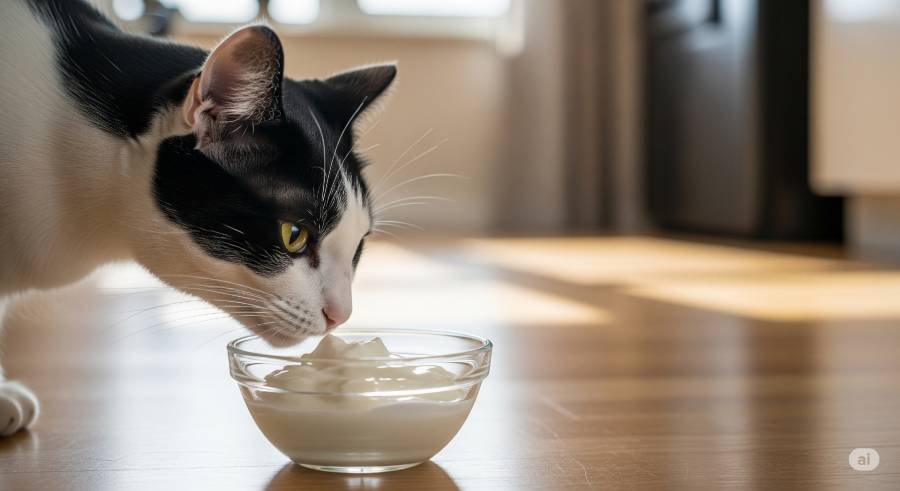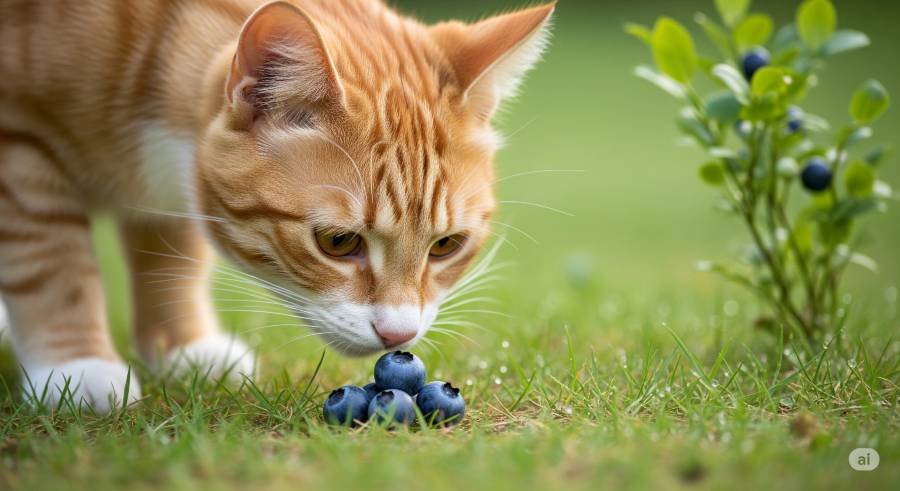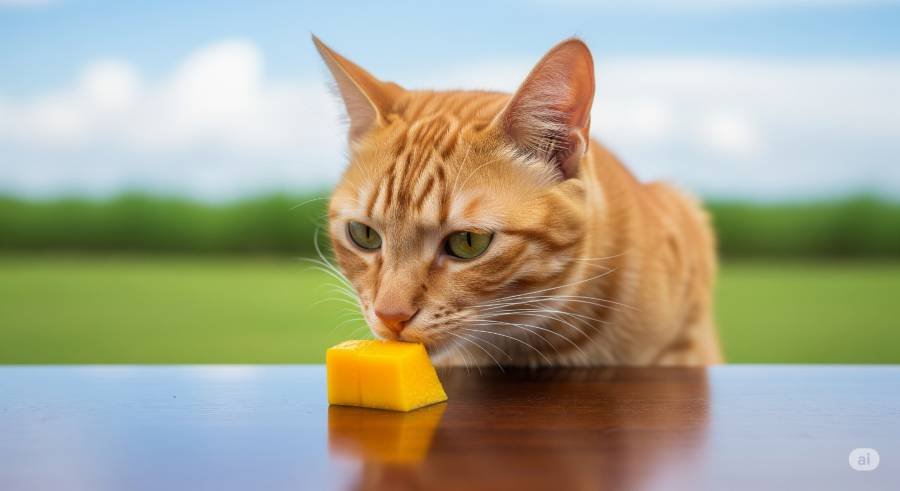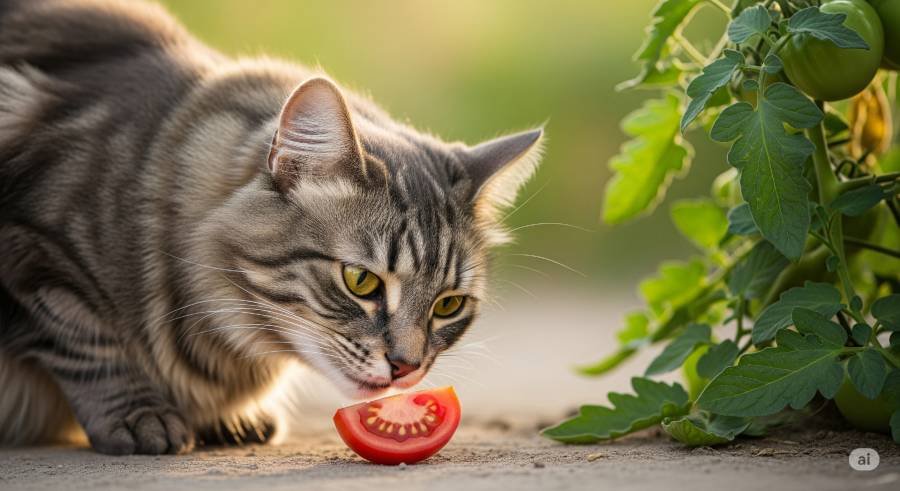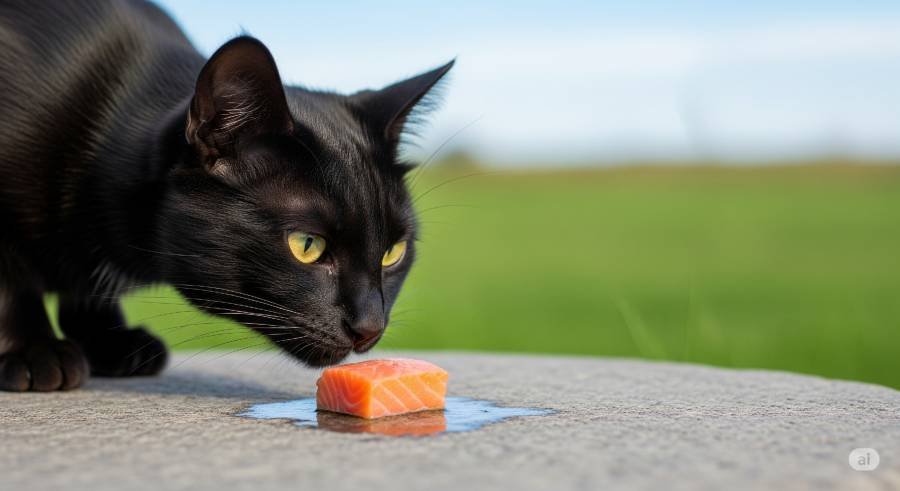Yes, cats can eat the flesh of ripe peaches in small quantities as an occasional treat. Peaches are not toxic to cats when properly prepared, but they should never be a staple in their diet.
Cats are obligate carnivores, meaning their primary nutritional needs are met through animal-based proteins, and fruits like peaches are not a natural or necessary part of their diet.
However, the flesh of a peach can be a safe, sweet treat if offered sparingly and prepared correctly.
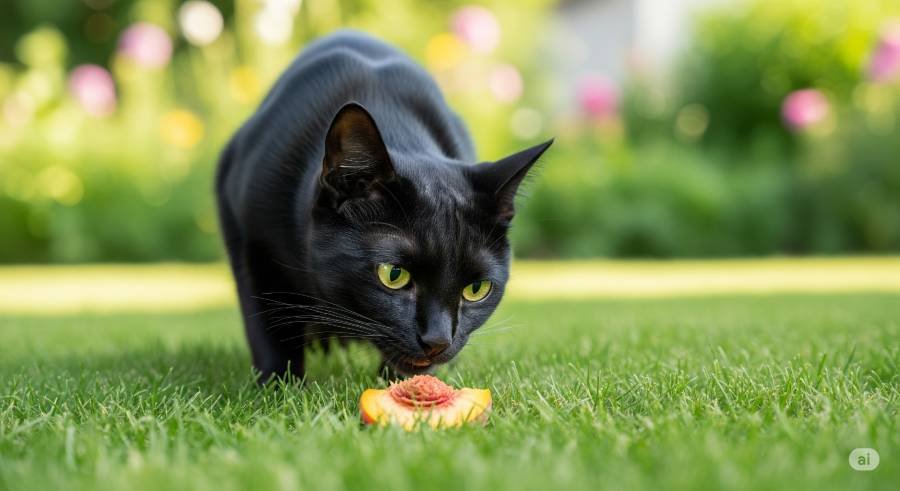
Potential Benefits of Peaches for Cats
Peaches contain some nutrients that could offer minor benefits to cats when consumed in small amounts:
- Vitamins: Peaches are rich in vitamins A and C. Vitamin A supports vision, skin, and immune health, while vitamin C acts as an antioxidant. However, cats produce their own vitamin C, so this benefit is minimal.
- Fiber: The fiber in peach flesh may aid digestion in small amounts, potentially helping with constipation.
- Water Content: Peaches have high water content (about 85–90%), which can contribute to hydration, especially if a cat doesn’t drink enough water.
- Low Calories: A small piece of peach is low in calories, making it a relatively guilt-free treat compared to high-calorie commercial treats.
Despite these potential benefits, peaches should only be a rare treat, as cats derive little nutritional value from fruits compared to their regular diet.
Risks and Dangers of Peaches for Cats
While the flesh of a peach is safe in moderation, other parts of the peach and improper preparation pose significant risks:
- Peach Pits: The pit (or stone) of a peach is highly dangerous. It contains amygdalin, a compound that can release cyanide when metabolized. Cyanide is toxic and can cause severe symptoms, including difficulty breathing, dilated pupils, weakness, or even death in extreme cases. The pit is also a choking hazard and can cause intestinal blockages if swallowed.
- Peach Skin: The skin of a peach may contain pesticides or bacteria, even if washed. It’s also harder for cats to digest and could cause stomach upset. Always peel the peach before offering it to your cat.
- Leaves and Stems: Like the pit, the leaves and stems of the peach plant contain amygdalin and are toxic. Ensure your cat cannot access peach trees or discarded peach parts.
- High Sugar Content: Peaches are high in natural sugars, which can lead to digestive issues like diarrhea or vomiting if consumed in excess. Long-term overconsumption of sugary foods can contribute to obesity or diabetes in cats.
- Allergies or Sensitivities: Some cats may have sensitivities to new foods, including peaches, which could result in gastrointestinal upset or allergic reactions.
- Unripe Peaches: Unripe peaches are harder and more acidic, which can irritate a cat’s stomach and cause discomfort.
How to Safely Feed Peaches to Cats
To safely offer peaches to your cat, follow these precautions:
- Use Only the Flesh: Remove the pit, skin, leaves, and stem completely. Only the soft, ripe flesh of the peach is safe.
- Wash Thoroughly: Rinse the peach under running water to remove any pesticides, dirt, or bacteria before peeling.
- Cut into Small Pieces: Dice the peach flesh into tiny, bite-sized pieces to prevent choking and make it easier for your cat to eat.
- Offer in Moderation: A small piece (e.g., a teaspoon-sized portion) once in a while is sufficient. Treats, including fruits, should make up no more than 10% of a cat’s daily caloric intake.
- Check for Ripeness: Use only ripe peaches, as they are softer and sweeter, making them easier to digest.
- Monitor for Reactions: After giving your cat a small amount of peach for the first time, watch for signs of digestive upset (e.g., vomiting, diarrhea) or allergic reactions (e.g., itching, swelling). If any adverse symptoms occur, stop feeding peaches and consult a veterinarian.
- Avoid Processed Peaches: Never give cats canned peaches, peach yogurt, peach jam, or other peach-flavored products. These often contain added sugars, preservatives, or artificial sweeteners (like xylitol), which are harmful to cats.
Signs of Peach-Related Toxicity
If your cat accidentally consumes a peach pit, leaves, stem, or a large amount of peach flesh, watch for these symptoms of toxicity or distress:
- Vomiting or diarrhea
- Lethargy or weakness
- Difficulty breathing
- Dilated pupils
- Tremors or seizures
- Loss of appetite
If you suspect your cat has ingested a toxic part of a peach or is showing any of these symptoms, contact your veterinarian or an emergency vet immediately. Quick action is critical, especially in cases of cyanide poisoning from pits or plant parts.
Alternatives to Peaches
If you’re looking for safe fruit treats for your cat, consider these alternatives, which are also safe in small amounts:
- Blueberries: Low in sugar and rich in antioxidants, blueberries are a great occasional treat.
- Watermelon: Seedless, rind-free watermelon flesh is hydrating and low-calorie.
- Cantaloupe: Small amounts of cantaloupe flesh can be appealing to cats due to its mild flavor.
- Bananas: A tiny slice of banana is safe but should be given sparingly due to high sugar content.
Always introduce new foods gradually and in small portions, and consult your vet if you’re unsure about a specific fruit.
What Do Experts Say?
Veterinary sources, such as the ASPCA and PetMD, confirm that the flesh of peaches is non-toxic to cats, but they emphasize the dangers of the pit, leaves, and stems due to cyanide content. The ASPCA lists peach pits as toxic to cats, dogs, and horses. Experts also stress that fruits should only be a small part of a cat’s diet, as their digestive systems are designed for meat-based nutrition.
Additional Considerations
- Individual Health Conditions: Cats with diabetes, obesity, or sensitive stomachs may not tolerate peaches well. Always check with your vet before introducing new foods, especially for cats with medical conditions.
- Organic vs. Non-Organic: Organic peaches may have fewer pesticides, but they still need to be washed and peeled. The pit remains toxic regardless of whether the peach is organic.
- Cat Preferences: Not all cats are interested in fruits. If your cat shows no interest in peaches, don’t force them to eat it. Offer cat-safe treats like freeze-dried meat instead.
Cats can safely eat small amounts of ripe peach flesh as an occasional treat, provided the pit, skin, leaves, and stem are removed. Peaches offer minor nutritional benefits like vitamins and hydration but should not replace a balanced, meat-based diet.
Always prepare peaches carefully, feed them in moderation, and monitor your cat for any adverse reactions.
If you have any concerns or if your cat consumes a toxic part of the peach, contact your veterinarian immediately.
